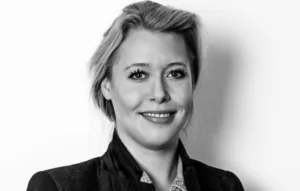Harmony Murphy is GM Advertising UK at eBay and NDA’s monthly columnist
The last decade has seen diversity and inclusion soar up the agenda for brands and consumers alike, and rightly so. Increasingly, consumers are demanding diversity as a prerequisite to their custom. In fact, FleishmanHillard’s 2021 Authenticity Gap report found that 33% of informed consumers now expect companies to advocate for diversity, equality, and inclusion in society. Consumers no longer just buy a product – they buy a story, as well as a brand’s ethical and moral standpoint.
And, within the world of advertising, ensuring adequate representation of people – regardless of race, gender, religion, economic standing and more – isn’t just about pushing consumers down the sales funnel. Doing this properly and effectively is crucial to building brand equity, brand sentiment and, most importantly, community.
What’s more, marketers that have a platform at scale also have a responsibility to use it to drive positive change and social equality. Indeed, an age-old quote feels fitting here. As Brecht called art “not a mirror to reflect reality, but a hammer to shape it”, we should consider advertising of today in the same way. Its power to do good is endless. And there is no better time than now, as both consumers and brands take stock and re-assess their priorities and values post-pandemic.
Diversity and inclusion isn’t a choice, it’s a duty
Brands and agencies need to be proactive in their approach to diversity and inclusion in advertising – it’s no longer a nice-to-have, but a need-right-now. And what consumers demand, and deserve most, is authenticity.
Diversity in advertising can’t be solely reactive, with brands and businesses responding only when forced by external events or to meet a quota. Paying lip service to LGBTQ companies around Pride, or partnering with black-owned businesses around Black History Month just isn’t good enough. Minority groups should be given a platform and a voice consistently. There needs to be an authentic thread of diversity and inclusion which flows through the entirety of a business’ external communications and wider strategy, and it needs to have been considered from the very outset when planning is tabled.
As part of this, advertisers and brands also need to be sensitive and listen acutely to the market. Getting things wrong in this area can do irreparable damage, and hastiness can sometimes be worse than doing nothing at all. Brands need to harness the power of data and bake diversity and inclusion into all business strategies and outputs to ensure the best chance of communicating reliably and authentically.
Going beyond virtue signalling and heralding organisational change
In one sense, showcasing diverse models within ads themselves is a great step forward. Brands like Dove have now garnered themselves a good reputation for doing things the right way through the ‘Dove Real Beauty Pledge’ which combats beauty standards.
But, considering how the industry has historically worked to reinforce negative stereotypes at certain times in the past, some may say diverse advertising is the least we can do. Demonstrating a range of models can do wonders to make customers of all walks of life feel seen – as well as go some way to put right the damage caused by previous generations’ advertising – but this shouldn’t be where the buck stops.
In the advertising industry we have to go beyond a situation where diversity is being communicated externally but isn’t hitting the mark within the business itself. Consumers are too smart not to spot superficial narratives, and change must also happen from within in order to be radiated outwards in a trustworthy way. We therefore need to make it a priority to also push for internal organisational change and encourage others to join us and set a standard across the entire advertising ecosystem.
This involves both cultivating a range of voices within an organisation through diverse hiring practices (i.e. through using external programmes like Generation Success), and also ensuring these voices, once hired, have a platform upon which they feel like their voice is heard, valued and makes a difference. Giving a voice to diverse employees ensures business choices are made for the benefit of all – ultimately future-proofing your business
Advertising is a boon for behavioural change
Advertising has so much power when it comes to behavioural change, both internally and externally – from knocking down harmful stereotypes, to empowering underrepresented people. It can give hope and aspiration to a range of communities whilst also driving social awareness.
Not only is having a robust diversity and inclusion strategy the right thing to do – on all fronts – it’s also a sound business decision. It can pay dividends for brands when executed properly, going a long way to build trust, loyalty, and ROI. Brands need to understand the holistic weight of their impact and influence as, ultimately, consumers are more likely to be loyal to a brand that they feel is representative of society and not just keeping up with the times but determining them.









